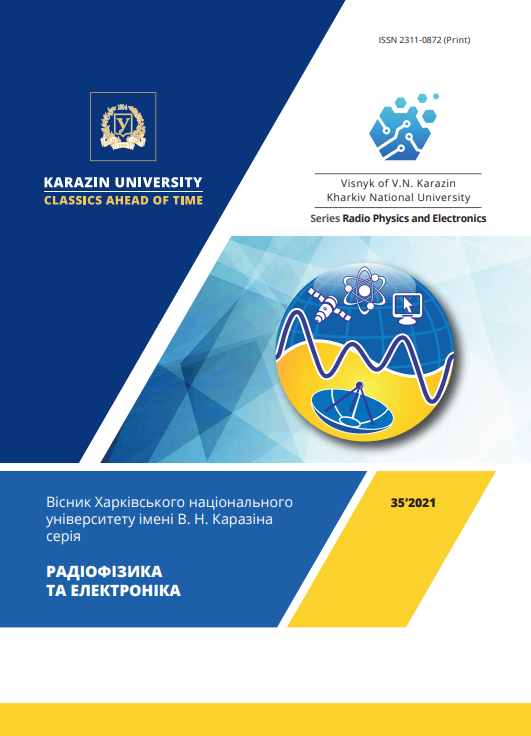Applying spline interpolation to increase accuracy of correlation-emergency navigation systems
Abstract
Relevance. Spline interpolation is used to improve the accuracy of correlation-extreme navigation systems. A two-stage algorithm for combining images in correlation-extreme navigation systems is proposed. At the first stage, the surface of the decision function of the algorithm is constructed in the vicinity of its extremum using a quadratic interpolator by six points and its Gaussian curvature and extremum coordinates are estimated. These parameters are used to determine the optimal value of the parameter of the cubic spline interpolator used in the second stage in order to refine the rough estimate of the coordinates and improve the positioning accuracy of the navigation system.
Purpose of the work: The purpose of the work is to develop an algorithm for aligning images in correlation-extreme navigation systems, which makes it possible to realize a cubic spline parameter close to the optimal value for each of the possible shifts of the current image relative to the reference image and, as a result, to increase the accuracy of determining the coordinates.
Materials and methods. In correlation-extreme navigation systems, the coordinates of the aircraft are determined by calculating the mutual shift of the current image obtained using the sensor of the Earth's physical field and the reference image, which is known in advance. At the same time, the alignment accuracy of discrete current and reference images, which are usually used in practice, does not exceed half a pixel. Therefore, the problem of improving the accuracy of navigation systems is of great importance. One of the possible ways to solve this problem is to use methods for approximating the decision function of the image alignment algorithm in the vicinity of its global maximum.Results: To illustrate the gain in the accuracy of the positioning of navigation systems, statistical tests of the algorithm with a 6-point interpolator and the above-described two-stage procedure for minimizing the decision function containing spline interpolation at the second stage were carried out. A typical image was used as a reference image. The coordinates of the center of the current and reference images were played randomly in accordance with the two-dimensional normal distribution law, the average value of which coincided with the center of the reference image; the standard deviation is also found. Then the current image was formed. The constructed current image was noisy with additive white Gaussian noise with zero mean value and the same standard deviation for each element . Image alignment was assumed to be correct if the following conditions were met: , where – is the shift estimate generated by the algorithm. Then, the algorithms were repeatedly run with different realizations of the noise component of the current image, and the dependences of the root-mean-square error in each direction on the mean-square value were plotted . The figures in the article show the dependencies for the algorithm with a 6-point interpolator (upper curve) and for a two-stage algorithm (lower curve). Analysis of the graphs allows us to conclude that the second algorithm wins in the accuracy of determining the coordinates of the shift by about 5 times. The dependencies for both algorithms practically coincide with those shown in the figure. It should be noted the weak dependence of the positioning accuracy on the change in the parameter in the area .
Conclusions: It is shown that the optimal value of the parameter of the cubic spline interpolator depends to a lesser extent on the magnitude of the local shift of the images and, to a greater extent, on the correlation interval of the reference image in the vicinity of the image alignment point, which is proposed to be estimated using the Gaussian curvature parameter.
Downloads
References
2. Antyufeev VI, Bakulin IE, Bykov VN, Grichanyuk AM, Miroshnik-Bykova TV. Improving the positioning accuracy of radiometric correlation-extreme navigation systems by using methods of approximation of the decisive function. (Message 1). Radio engineering: Vseukr. mezhved. scientific and technical Sat. 2002;124:84-89. (In Russian).
3. Keys RG. Cubic convolution interpolation for Digital Image Processing. IEEE Trans. Acoust., Speech, Signal Processing. 1981;29(6):1153-1160.
4. Dubrovin BA, Novikov SP, Fomenko AT. Modern geometry. Moscow: Nauka; 1979. 760 p. (In Russian).
5. Poliak E. Numerical optimization methods. One approach. Moscow: Mir; 1974. 376 p. (In Russian).
6. Jahne B. Digital Image Processing: Concepts, Algorithms, and Scientific Applications. Berlin: Springer-Verlag; 1993.
7. Antyufeev VI, Bykov VN, Chmil VV. Probability of correct alignment of images in correlation-extreme navigation systems. Radio engineering: Vseukr. mezhved. scientific and technical Sat. 2005;140:70-75.




